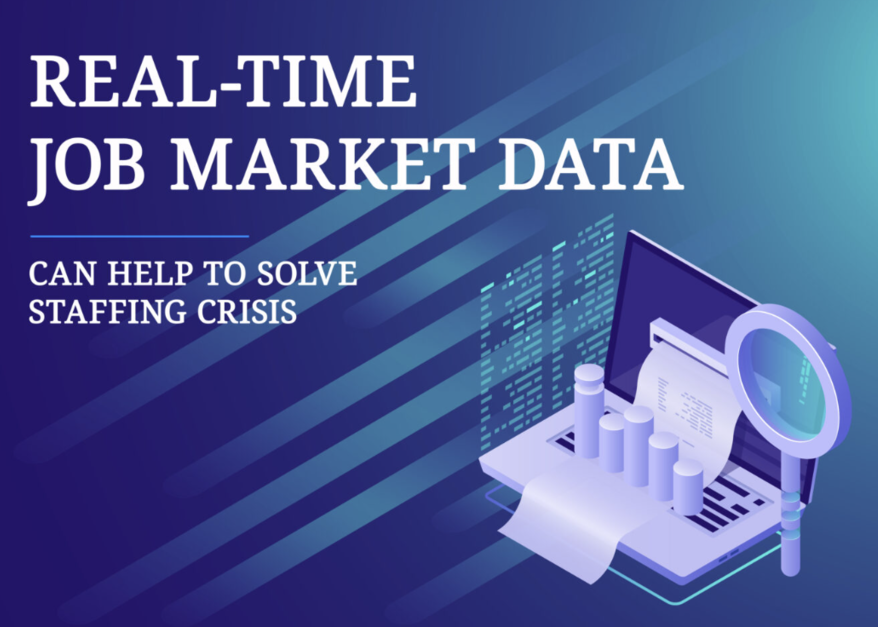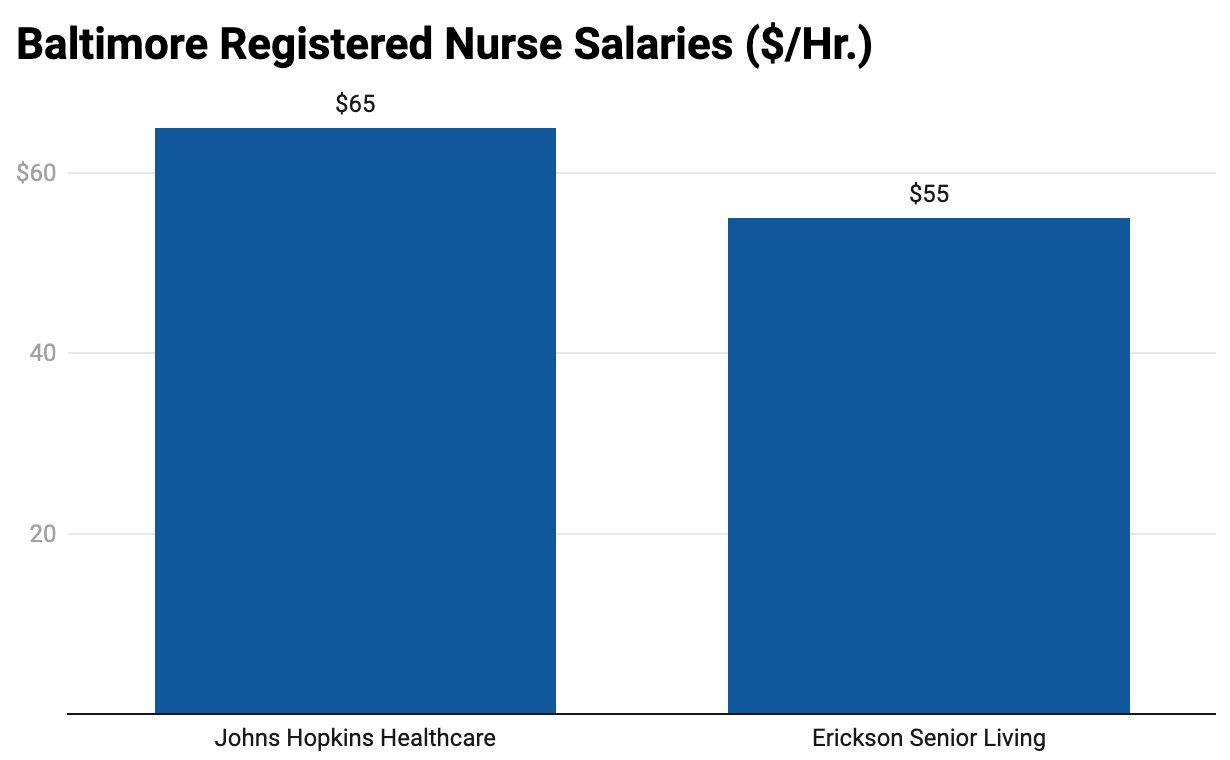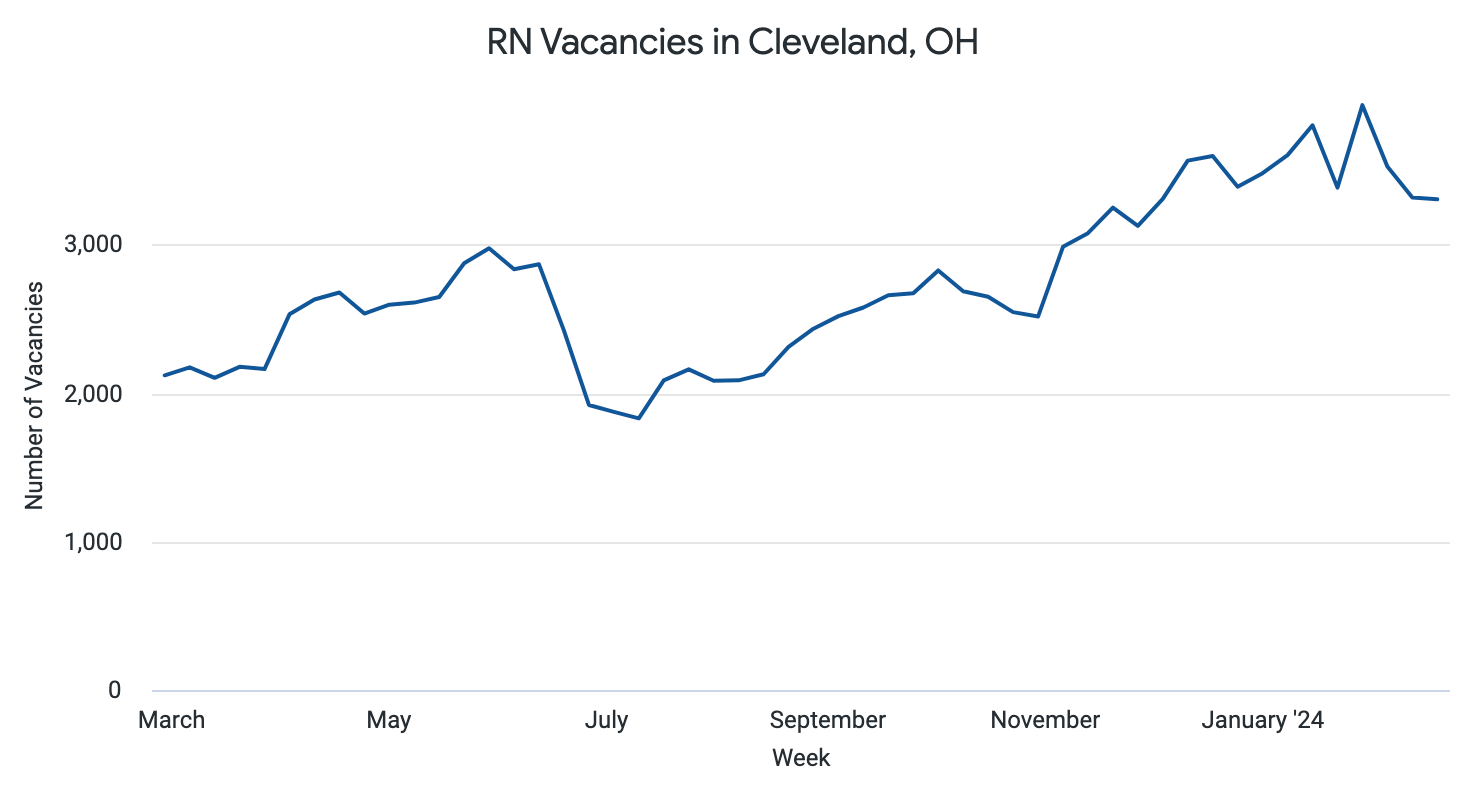
Senior Living Is Experiencing a Staffing Crisis: How Real-Time Job Market Data Can Help Solve It
The senior living industry has been dealing with a staffing shortage for decades. It’s often framed as a complex matter, but the reason is often fairly simple: employees can go to McDonald’s or Starbucks, work easier jobs, and receive the same (and sometimes higher) pay.
But that explanation doesn’t reduce the severity of this issue. As Baby Boomers prepare to enter senior living en masse, senior living leaders must contend with this boom as well as the limited supply of talent.
It’s, in a word, a crisis.
It’s one that Jonathan Woodrow, CEO of LivingPath – a provider of senior housing market data analytics – knows well. That’s why he taps our data to provide job listings, hiring and even wage data to senior living owners, operators, and community leaders.
We spoke with Jonathan to understand the severity of the senior living staffing shortage and how people can use real-time job market data to tackle it.
Background: High Labor Costs and Low Staffing Levels Threaten Senior Living Survival
Today, operators frequently use agency labor and excess overtime to meet their staffing needs.
These duct-tape solutions often bloat labor costs. (In the rare exceptions they don’t, like in certain California markets, it’s because talent simply can’t afford to live nearby.)
Broadly speaking, staffing represented 52 percent of total expenses for skilled nursing providers in 2021. Since then, labor costs have risen by more than 11 percent. And the staffing crisis hasn’t improved much.
In fact, every state in the US was affected by senior living staffing shortages this past year. In 43 of those states, long-term care facilities closed.
The takeaway: senior living needs help recruiting talent.
Keep reading for three ways senior living leaders – from REITs to hiring managers – can use real-time job market data to build their staffing pipeline.
1. Track Wages from Your Competition AND Your Talent Competition
The majority of labor costs go to wages for employees, like cooks and nurses, who regularly work onsite. These staff members are in high demand for you and your direct competitors.
Importantly, many other businesses compete for this same talent. Those businesses are what we refer to as talent competition. They hire the same talent that you do – but they’re in different industries.
For senior living, talent competition may range from hospitals to fast food restaurants. That complicates recruiting.
One way to uncomplicate this recruiting: use data to track the wages your direct competitors and talent competitors offer. With Aspen Tech Labs’ Wage Benchmarking Tool, your hiring team can put together a list of these employers and see what rates they advertise in job listings.
You might not be able to match what, say, an RN is making at a nearby hospital (Figure 1). But you can use this wage information to inform your broader recruitment strategy. For example, you might instead offer a training stipend or a consistent schedule. Or you might highlight your lighter workload relative to the workloads that come with working in a hospital.

Figure 1: The wages offered for RNs at Erickson Senior Living are 15% lower compared to RNs at Johns Hopkins, based on current job listings.
2. Identify Common Benefits and Incentives
Senior living communities frequently use benefits – like a sign-on bonus – to attract talent. At the height of the staffing crisis in 2021, 63 percent of senior living communities offered sign-on bonuses. In 2023, that number dropped to 26 percent.
This is a compelling stat. But it’s one of many. To get a well-rounded picture of the hiring market you also need to know:
- Which benefits your talent competition offers.
- Which benefits industry leaders offer.
- Which benefits are most common among your talent competition.
- Which benefits are the most common among industry leaders.
- How certain benefits rise and fall in popularity over time.
Real-time and historical jobs data give you this information.
For example, it might reveal that your talent competitors don’t offer comparable PTO. In response, you may suggest that your community prominently feature its PTO policy in job listings.
“This is where the advantages of real-time and historical jobs data come into play,” Jonathan said. You can see which benefits were popular in previous quarters and which benefits are gaining steam today.
You gain the power of hindsight and foresight.
3. Check Hiring Trends in Your Area – and Beyond
Your hiring and retention strategy doesn’t exist in a vacuum. The labor market will always impact it. For example, the Great Resignation forced most businesses to reconsider what they offered candidates (salary, benefits, hybrid work options, etc.).
That same idea works on a smaller scale. Let’s say you run an assisted living community and notice that there’s an uptick in RN job listings near you. To attract talent, you’ll need a way to stand out. In this case, you might list hourly wages in your job listings even if your state or local laws don’t require it.

Figure 2: In nine months, there was a 56% increase in RN vacancy job listings in Cleveland, Ohio.
💡Quick Tip 💡 If you want your job listings to catch job seekers’ attention, post them on a Monday. Just six percent of job listings are uploaded on Mondays. (This stat is from Aspen Tech Labs’ 2023 End of Year US Jobs Report – download for more insights.)
Real-time job market data offers context that helps you shape your hiring strategies. And because the data is updated so frequently, you can adapt these strategies in real time.
The “Other Guys” Don’t Offer Transparent, Real-Time Data – We Do
The problem with sites like Payscale and the Bureau of Labor Statistics (BLS) is that they offer one of two things: transparency on where they get their data or regular updates to their data. But they don’t offer both.
You shouldn’t have to choose between getting transparent data or getting up-to-date data. So don’t.
Whether you’re in senior living or another industry shaped by a staffing shortage, choose transparent job market data that’s updated in real time to power your recruitment and retention efforts.
Interested in seeing exactly how this data can help your business? Book a demo!